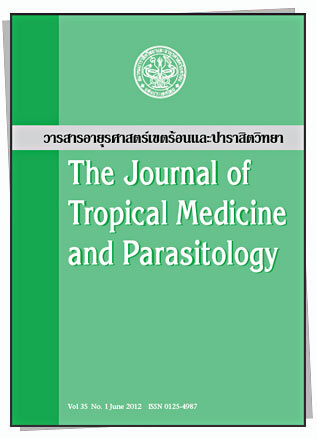Parasite Count and Survival during Fecal Waste Fermentation in a Piggery
Main Article Content
Abstract
Abstract
To help determine the potential of piggery waste as a source of biogas, and the safety ofutilizing piggery waste as organic manure, pig feces from three different piggeries werecollected for investigation. One kilogram of fecal waste from each sample was utilized for biogasexperiments using a locally assembled biogas set-up (ie, digester). Using a combination of formol-etherconcentration and Stoll’s techniques, the number and types of parasites in an estimated 1.0 g of fecesfrom each digester were determined ab initio and every 5 days over a 75-day period. The temperatureand pH inside each digester were taken on daily basis. Parasite eggs identified in the waste includedTaenia specie, Ascaris suum, hookworm, trematode specie, Trichuris suis, Oesophagostomum dentatum,and Hyostrongylus rubidus. Trophozoites and cysts observed included Balantidium, Entamoeba, Giardia,and Cryptosporidium. On the whole, metazoan parasite-counts decreased between the start and endof the study (days 1 to 75), with some fluctuations in the earlier days. Conversely, protozoan parasitecysts increased with time. Implications of the observations are discussed and some recommendationsare made.
Keywords: pig feces; digester; fermentation; protozoa; helminth; organic fertilizer
